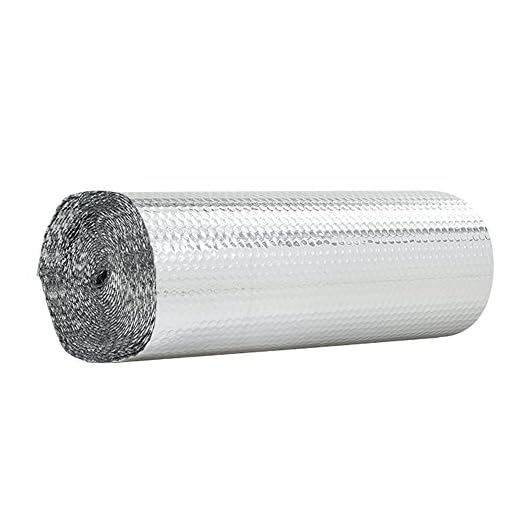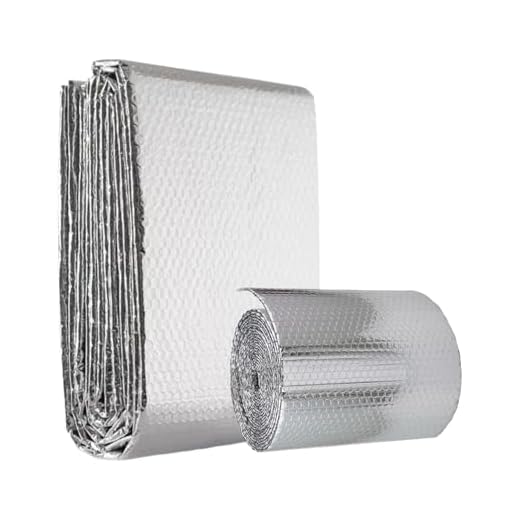How to stop condensation in metal shed





Condensation can be a real problem in a metal shed, causing damage to your tools, equipment, and other valuable items stored inside. If left unchecked, condensation can lead to rust, mold, and mildew, creating an unhealthy environment and reducing the lifespan of your shed.
But don’t worry! There are several simple and effective steps you can take to prevent condensation in your metal shed and keep your belongings safe and dry.
1. Ventilation is key: The most crucial step in reducing condensation is to ensure proper ventilation. Without good airflow, moisture accumulates inside the shed, creating the perfect environment for condensation to occur. Install vents or louvres on opposite sides of the shed to create cross ventilation and allow damp air to escape.
2. Insulate your shed: Insulating the walls and roof of your metal shed helps to regulate temperature and prevent the formation of condensation. There are various insulation materials available, such as bubble wrap insulation or polystyrene sheets, that can be easily applied to the interior walls and roof.
3. Use a dehumidifier: If ventilation and insulation alone don’t solve the condensation problem, consider using a dehumidifier. A dehumidifier helps to remove excess moisture from the air, reducing the chances of condensation occurring. Place the dehumidifier in the shed and let it run regularly to maintain the desired humidity level.
4. Avoid damp sources: Be mindful of what you store in your metal shed. Avoid storing wet or damp items as they contribute to moisture buildup. Keep firewood, wet gardening tools, or wet paint cans outside the shed to minimize additional sources of dampness.
5. Regularly check for leaks: Inspect your shed for any signs of leaks, such as water stains or wet spots. Repair any leaks promptly to prevent water from entering the shed and adding moisture to the air. Pay close attention to the roof and seams, as these are common areas for leaks to occur.
By following these steps, you can minimize condensation in your metal shed and create a dry, comfortable, and safe environment for your storage needs.
Steps to Prevent Condensation in Metal Shed
1. Insulate your metal shed: Apply insulation material to the walls, roof, and floor of your shed. This will help regulate the temperature inside the shed and reduce the amount of condensation that forms. Use suitable insulation materials, such as reflective foil insulation or foam insulation boards, to provide a barrier against moisture.
2. Ventilate your shed: Install proper ventilation, such as vents or fans, to allow air circulation in your shed. Good airflow will help eliminate excess humidity and reduce the chance of condensation. Make sure the vents are positioned to allow air to flow easily throughout the shed.
3. Create a moisture barrier: Lay down a moisture barrier, such as polyethylene sheeting, on the floor of your shed before adding any items. This will prevent moisture from the ground seeping into the shed and causing condensation. Ensure the moisture barrier is properly sealed and covers the entire floor surface.
4. Seal any gaps or cracks: Inspect and seal any gaps, cracks, or holes in your shed where moisture can enter. Pay close attention to areas around doors, windows, and joints. Use appropriate sealants, such as silicone or weather stripping, to create an airtight seal and prevent condensation from forming.
5. Install a dehumidifier: Consider using a dehumidifier in your metal shed to reduce excess moisture in the air. Dehumidifiers work by extracting moisture from the air, helping to prevent condensation and mold growth. Choose a dehumidifier suitable for the size and volume of your shed.
Additional Tips:
- Store any damp or wet items elsewhere to prevent them from increasing the humidity levels inside your shed.
- Avoid drying clothes or other materials in your shed as this can contribute to excess moisture.
- Regularly inspect your shed for signs of moisture buildup or condensation, and take prompt action to address any issues.
| Material | Description |
|---|---|
| Reflective foil insulation | This type of insulation reflects heat radiation and helps regulate temperature. |
| Foam insulation boards | Good thermal insulators that provide an additional layer of protection against condensation. |
| Blown-in insulation | Can fill gaps and cavities for efficient temperature control and reduction of condensation. |
Understanding Condensation and its Effects
Condensation is a natural process that occurs when warm, moist air comes into contact with a colder surface. In the case of a metal shed, condensation can be a common problem, leading to a range of undesirable effects.
One of the main effects of condensation in a metal shed is the formation of water droplets on the interior surface of the shed. This can result in water pooling on the floor, leading to a damp and potentially moldy environment. Over time, this excess moisture can cause damage to the contents of the shed, such as rusting tools or rotting wood.
Additionally, condensation can cause the metal surfaces of the shed to corrode, reducing the lifespan and structural integrity of the shed. This corrosion can weaken the shed and make it more prone to leaks and other forms of damage.
Furthermore, condensation can create a discomforting environment within the shed. The excess moisture can make the inside of the shed feel damp and clammy, making it less pleasant to spend time in and potentially affecting the usability of the space.
To prevent these negative effects of condensation in a metal shed, it is important to take proactive measures. This may include ensuring proper ventilation in the shed to allow for the free flow of air, which can help to prevent moisture buildup. Additionally, using insulation and dehumidifiers can help to regulate the temperature and humidity inside the shed, reducing the likelihood of condensation forming.
| Effects of Condensation in a Metal Shed | Preventive Measures |
|---|---|
| Water pooling on the floor | Proper ventilation to allow for airflow |
| Damage to contents (rusting, rotting) | Use insulation and dehumidifiers to regulate temperature and humidity |
| Corrosion of metal surfaces | Regularly inspect and repair any damaged areas to prevent water ingress |
| Discomforting environment | Ensure proper insulation and ventilation |
Adequate Ventilation
One of the most effective ways to tackle condensation in a metal shed is to ensure adequate ventilation. Ventilation is necessary to help reduce moisture levels, preventing the formation of condensation on the shed walls and roof.
Types of Ventilation:
There are a few different options for providing ventilation in a metal shed:
- Windows: Install windows in the shed to allow for air circulation. Opening the windows periodically can help exchange air and reduce moisture buildup.
- Vents: Built-in vents or vent kits can be purchased and installed to provide airflow and ventilation in the shed.
- Roof Vents: Installing roof vents can help release hot, humid air from the top of the shed, preventing moisture from getting trapped.
- Wall Gaps: Leaving small gaps or cracks between the wall panels can also allow for airflow and help reduce condensation.
Considerations for Ventilation:
When planning the ventilation system for your metal shed, keep the following considerations in mind:
- Weather Conditions: Ensure that the vents and windows are designed to handle different weather conditions, such as rain and snow.
- Location: Place vents and windows strategically to maximize airflow and prevent the buildup of stagnant air.
- Insulation: Insulate the shed properly to regulate temperature and prevent drastic changes that can lead to condensation.
Regular Maintenance:
It’s important to regularly check and clean the ventilation system to ensure proper airflow. Clear any debris or obstructions that may be blocking the vents or windows.
By providing adequate ventilation in your metal shed, you can effectively reduce condensation and maintain a dry environment that is more resistant to rust and other damage caused by moisture.
Insulation
Insulating your metal shed is an effective way to reduce condensation. Adding insulation creates a barrier between the warm air inside the shed and the colder exterior, preventing moisture from forming.
Types of Insulation Materials
There are several insulation materials suitable for metal sheds:
- Fiberglass: This popular insulation material is available in rolls or batts. It is relatively easy to install and provides good thermal resistance.
- Spray foam: This insulation material expands and adheres to the surfaces, creating a seamless barrier. It has excellent insulating properties and can fill in gaps and cracks.
- Rigid foam: Rigid foam panels provide high insulation value and can be easily cut and fitted to the shed walls.
Steps for Insulating your Metal Shed
Follow these steps to insulate your metal shed properly:
- Measure: Determine the amount of insulation material you need by measuring the walls, roof, and floor of your shed.
- Clean: Ensure that all surfaces are clean and free of dust, debris, and moisture.
- Install vapor barrier: Install a vapor barrier on the walls and roof before placing the insulation material. This prevents moisture from seeping into the insulation.
- Fit insulation: Cut the insulation material according to the measurements and fit it between the wall studs, roof rafters, and floor joists.
- Secure insulation: Use nails, staples, or adhesive to secure the insulation in place.
- Seal gaps and joints: Use caulk or foam sealant to seal any gaps or joints to prevent airflow.
- Insulate doors and windows: Install weatherstripping on doors and windows to ensure a tight seal.
Proper insulation will help maintain a stable temperature in your metal shed, reducing the likelihood of condensation. Combined with ventilation and moisture control measures, insulation can significantly minimize condensation issues.
Use of Desiccants
One effective way to combat condensation in a metal shed is to use desiccants. Desiccants are substances that absorb moisture from the air, helping to reduce humidity levels and prevent condensation.
Desiccant packs or bags can be placed inside the metal shed to absorb any excess moisture. These packs usually contain silica gel, which is an excellent desiccant as it can absorb moisture up to 40% of its weight.
When using desiccants, it is recommended to place them in areas where condensation is likely to occur, such as near windows or doors. Additionally, desiccants should be checked regularly and replaced if they become saturated to ensure their effectiveness.
| Pros of using desiccants | Cons of using desiccants |
|---|---|
| Effectively absorbs moisture from the air, reducing humidity levels in the shed | Desiccants need regular checking and replacement when saturated |
| Easy to use and place inside the shed | Desiccants may need to be purchased and replaced periodically |
| Helps prevent the formation of condensation, thus reducing the chances of rust and mold growth | Not a permanent solution to condensation issues |
| Can be used alongside other methods to further reduce condensation | May not be as effective in extremely humid climates |
While desiccants can be a useful tool in combating condensation, it is important to note that they may not be a permanent solution. Other methods, such as proper ventilation and insulation, should be considered for a comprehensive approach to preventing condensation in a metal shed. However, when used in conjunction with these methods, desiccants can be an effective means of reducing moisture and protecting your belongings.








